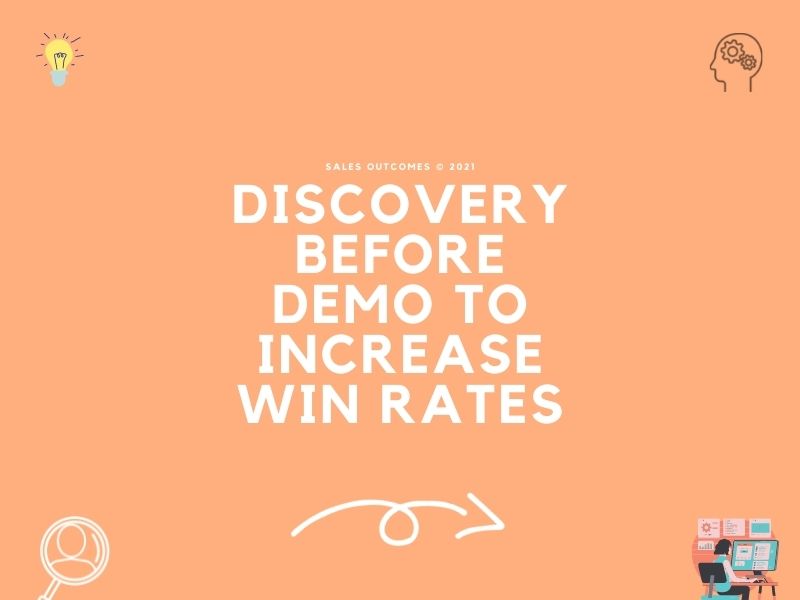Discovery Calls & Product Demos
-
- Anatomy of a Typical Product Demo
- Discovery Before Demo
If the software is a primary component of your solution offering, the chances are that the number of online demos conducted is a key performance metric.
I get it. Demos are vital as they can showcase your technology and how it can help customers solve problems.
The thing is that most salespeople focus on what the software solution can do (features and capabilities) instead of how it can help customers solve problems.
How does this happen? The heart of the matter is that demos often start before a good discovery process. Why doesn’t good discovery happen? The primary reason is that most salespeople attempt to do discovery and the demo within a 60-minute meeting.
1. Anatomy of a Typical Product Demo
It’s simple math that you can’t do both discovery and a demo on the same call. Let me show you.
If you have 60-minutes scheduled with your prospect:
That’s 20 minutes of discovery, 20 minutes of the demo, and 20 minutes for pleasantries, introductions, Q&A, and next steps. If anyone arrives late or has a technical issue, the salesperson feels pressured to get to the demo even sooner.
When merged with a demo, discovery naturally gets rushed. Instead of a meaningful conversation, salespeople gravitate to a handful of qualification questions.
With 20 minutes or less of discovery, it’s not likely that the salesperson can surface pain points, business challenges, or compelling reasons for the prospect to change the status quo. So, they end up with a drive-by demo where the salesperson presents all the menus, buttons, and features, hoping that something interests the prospect they can discuss further.
At the end of the demo, you’ll likely end up with a non-committal response on the next steps from the prospect because the salesperson did not customize the demo to their business needs. In addition, the relationship is not off to a good start.
2. Discovery Before Demo
The discovery process serves several purposes. A priority is to reveal a prospect’s business needs. But it is equally important to build trust and understand the buying and decision-making process.
If the salesperson does not understand the prospect’s business challenges, it’s unlikely they can shape the value proposition for your solution.
Even if the customer has signed up for a demo (a typical call to action), the salesperson should set the stage right away with the prospect that a bit of discovery is essential to provide a meaningful demo, even if it needs to be on a subsequent call.
A good discovery process guides the prospect in a conversational manner rather than an interview format. Ideally, the salesperson should talk less than 50% of the time to ensure the prospect is engaged. Solid and active listening skills are needed to cultivate a meaningful conversation.
Conducting discovery before a demo seems straightforward, but I understand it can be challenging to risk not getting to the demo on the first call.
However, suppose your opportunity win rate is less than 25%. In that case, that may indicate that it’s worth the effort to enable salespeople to conduct better discovery rather than increase the number of demos.
For more Tips to Improve B2B Win Rates, Click Here to Subscribe to Two-Bullet-Tuesday





